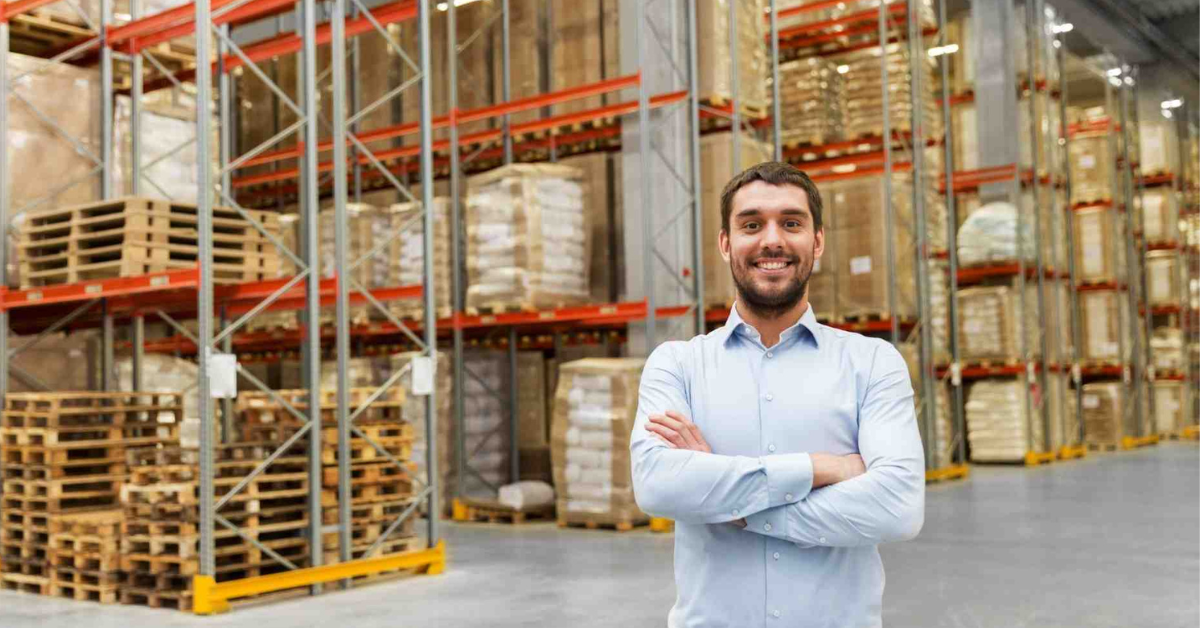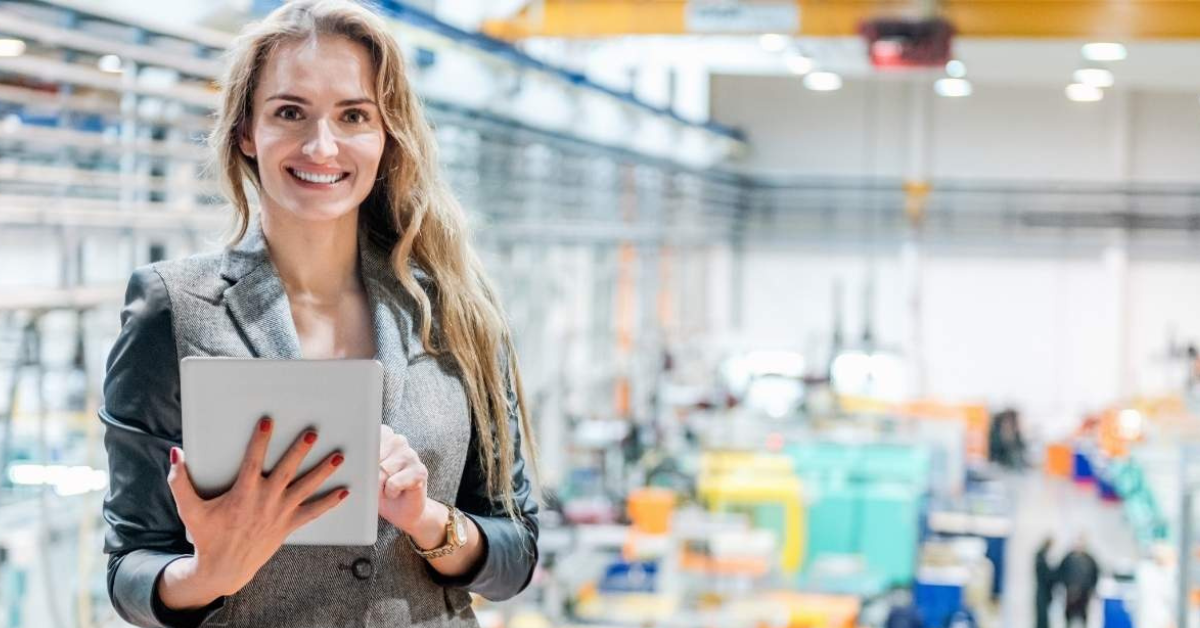NRF is the National Retail Federation’s annual conference, the most important retail industry event globally. NRF 2025 will be a key event that is sure to gather top industry minds and decision-makers to debate and practice the future of the retail sector. This full report presents the aspects that are most anticipated, the tools, and the consequences of how NRF will be, 2025, while focusing on inventory management and supply chain optimization.
The Significance of NRF 2025 in the Retail Industry
While the one-of-a-kind retail venue will be the most important, retail will also continue to be the fastest-changing industry in the retail sector., NRF 2025 will be a pivoting moment for the consumer technology sector for business leaders who want to be up to date with technology trend to get cutting edge information, new discoveries, and innovation that will greatly define the retail future. The event’s significance will be due to the notch it will occupy as a platform for people to gather, share knowledge and experience, and display the newest in retail technology and practices.
Topics that are expected to be among the key focuses of NRF 2025 are going to include:
- Changing the retail business over to digital and investing in omnichannel marketing strategies
- The use of Artificial Intelligence (AI) and Machine Learning (ML) in retail
- The development of sustainable and ethical retail practice
- The introduction of the latest and advanced customer experience management strategies
- The evolution of supply chain management and the concept of optimization
- The deployment and integration of new inventory management solutions
Key Themes and Trends at NRF 2025
1. AI-Driven Inventory Management
AI Innovation may overtake the inventory management sector as its own entity. NRF 2025 is going to be the platform where AI adoption is going to be the most evident. As a result, AI systems capable of:
- Netting the demand curve in the most accurate way through AI forecasting
- Real-time replenishing on-demand across all supply chain locations
- Automated order processing
- Consolidation of data from various sources like social media and economic indicators that help make inventory management decisions
2. Blockchain in Supply Chain Transparency
Enter blockchain, the advocate of transparent and traceable supply chains. It is expected that NRF 2025 will bring forth blockchain models that could be useful for instance:
- Allowing for the monitoring of product completion from the first mile to retail
- Providing means to verify product authenticity and the use of ethical materials
- Enabling faster and more secure transactions between partners in the supply chain
- Nurturing a robust recall management system and fraud-free environment
3. Internet of Things (IoT) in Retail Operations
At NRF 2025, the IoT retail trend is going to get the spotlight. The advancements might include:
- Shelves that know when they are about to be low on products and send a notification to the warehouse
- RFID tags reveal the trending of the product through real-time location and condition information
- IoT warehouses practicing the work of better storage and picking routines
- Connected devices that help in predicting the maintenance of retail equipment
4. Sustainable and Circular Supply Chains
The importance of sustainability cannot be underestimated in retail stocking operations. NRF 2025 will provide insights into how every link in the supply chain can be improved using both technologies and strategies for example:
- Introducing systems that will redirect and reuse some of the products in the supply chain
- Utilizing the available data to reduce the existing overstock levels and forecast more precisely
- Recycling and upcycling ways of using products strategically
- Streamlining the reverse logistics process for items returned
5. Hyper-Personalization in Inventory Planning
The combination of analytics data and AI will give the retail business the space for a hyper-personalized inventory, which has been unimaginable until now. NRF 2025 proposed that users would be able to interact with similar systems:
-
- By using a camera that monitors and captures customer preferences during their stay and purchases
-
- To buy repetitively at a micro level
-
- By selling a range of products like furniture or any other item in a store which is given all-round customization covering online marketplaces and offline by the right product assortments
-
- To selling the product efficiently by incorporating a personalized demand and sales forecast
Technological Advancements in Inventory Management and Supply Chain Optimization
1. Predictive Analytics for Demand Forecasting
The use of intuitive, live analytics tools” linked to the implementation of machine learning artificial intelligent systems, to supply and demand patterns forecasting and subsequent inventory ordering facilities are also namely connected with the rise of AI technologies in retail, though “.
- Positive futures laid out through machine solid historical sales data and market trends analysis
- Being able to build up a very high level of accuracy when predicting demand
- Making necessary changes to changing market conditions
- Providing advice on when and what stock to order from suppliers to maintain inventory levels and avoid stockouts
2. Autonomous Robots in Warehouses
As foreseen, the usage of robots that can move freely inside warehouse premises and can be self-reliant and self-learning by all accounts is one of the themes displayed in NRF 2025. This technology, among others, is on the way to enabling expert robots that are able to:
- Move with efficiency, speed, and safety in warehouse space under the guidance and control of warehouse management systems
- Carry out the picking and packaging of items in the most accurate way
- Be the best workers helping humans in the performance of any task in the factory and do not limit themselves to just a few tasks
- Performing more straightforward quality audio, visual, and tactile tests and self-diagnose if necessary
3. Augmented Reality in Inventory Management
The time of AR and VR is almost at its hand when it comes to inventory management efficiency. It is expected that AR will be the main tool to achieve this. NRF 2025 may demonstrate AR application scenarios like those where:
- Warehouse staff are given optimal paths for fast product picking
- A technological device now directly informs the worker about the item’s real-time status
- Manufacturers can confirm planogram compliance and visual merchandising and warehouse staff are able to work with data visualization and virtual prototyping
- Employees acquire a higher level of intuition and proficiency in inventory management through AR-enhanced training
4. 5G-Enabled Supply Chain Visibility
The large-scale application of the fifth generation (5G) technology is expected to make inventory tracking and location of the data willing to deploy to the selected project seeing the supply chain with the most stringent possible precision. NRF 2025 could be a great platform to show how 5G technologies allow:
- Real-time observing of freight on a highly precise level
- End-to-end connectivity across all supply chain protocols and channels
- Remote supervision and control of the inventory and logistics
- Data collection followed by a dataset analysis for supply chain optimization purposes
5. AI-Powered Dynamic Pricing
Dynamic pricing strategies are also one of the systems perspectives to be highlighted at NRF2025. It has been announced that such systems will be able to:
- Real-time scanning of the market, data retrieved, product prices, and stock to readjust the prices up or down incidental to the requirements of sales or profits respectively
- The system has to be a balance of stock on the different mediums it perceives as optimal for sales
- Pricing tactics were designed and applied after grouping shoppers according to their purchasing behavior
Impact of NRF 2025 on Various Retail and Wholesale Sectors
1. Fashion and Apparel
Just from the NRF2025, where we can expect the implementation of:
- Theory-based projections are to enable fashion designers to claim more and more information about the next firebird of the industry to be fashionable season for their welfare, with the offered Artificial Intelligence (AI) trend prediction tools
- Pattern-based visuals are proposed with the purpose of trying cloth out, before making it. This way, customers experience replying and will be able to inform the company when they need the product.
- Materials and traceable yarn are good examples of sustainable sourcing strategies tried to be included in the part of the fashion industry supply chain.
- Personalized inventory for such brand names as H&M and ZARZEA are examples of how to utilize the inventory management principle of Retail businesses
2. Grocery and Perishables
For the grocery industry, the introduction of products will address specific challenges unique to the industry among others:
- Advanced thermodynamic techniques in the storage and monitoring of low-temperature items
- Artificial intelligence application to the extent that food waste is reduced due to accurate predictions of the amount of food perishable
- Outdoor farmers can increase sales with the help of electric sensors to improve and maintain cropped chemicals
- All processes through which the food can be traced for safety reasons without compromising any information are to be digitalized with the help of blockchain.
3. Electronics and Technology Retail
Among other things that may be expected in retail, the electronics industry, for instance, is going to focus on such matters like
- As RFID technology advances, more stores are able to track everything they have on their store shelves, letting them know when they are running low on certain items or if a sale is about to end.
- Custom-tailored in-store advertising is a vending machine system that uses factors like age, sex, and consciousness from customer feedback to make personalized recommendations
- Both VR and AR technology are being used to create the potential for users to interact with digital content using new-level devices
- Through the use of instrumentation systems, the company is able to anticipate the failure of products before it occurs
4. Home Improvement and Furniture
In the context of the warehouse and home improvement sector, innovations such as those demonstrated by NRF 2025 may include:
-
- Virtual reality products are explained to be the AR technology for the visualization of products in consumer homes where designers use 3D models to foster a connection between buyers and the products.
-
- Trucking software provides improved route info, saving the fuel to your destination depot.
-
- The warehouse is one area in which AI can play a significant role. By means of the examples of systems designed for computer-aided design (CAD), the connection with them is indistinguishable.
-
- Customization and the made-to-order inventory system are also techs that can win the impression of NRF 2025 to the heard of the consumers of the home store
5. Automotive Retail
Up to this time, some counterparts have sent parts using the exact mechanism and with a heightened conception of the densities of the required parts that are increasingly diverse and real-time monitored for predictive maintenance.
- New technology begins at the production, where the following techniques are used:
- VR tech is great for giving a sense of the product as it would be in the room and for mentions of products such as mirrors, televisions, etc
- The application of blockchain is at its best usage for vehicle history, and authenticity is ensured
- AI software helps mechanics with time management, parts ordering, etc., so it is used as customer relationship management for diagnostic software and online appointment booking
Evolution of ERP Systems to Address Future Retail Challenges
Human beings, in the name of technologies and opportunities, have started, already, to implement and change Enterprise Resource Planning (ERP) systems in essence. Throughout that period, the emergence of such major clusters of new developments as the following ones:
1. AI Integration
There is no doubt that automation will be a part of the future, which takes the form of predictive analytics and automated decision-making by ERP systems, also coming with enhanced machine learning algorithms as well as voice and tone recognition through natural language processing.
- Probability calculus and other quantitative methods, usually applied in studies, solved the problem with a machine making its own decisions safely and accurately over time
- Automation takes charge of running these routine tasks, resulting in the increased separation between the decision-maker and the decision object.
- The system will be talking to a user through natural language and the system is going to do some writing and speaking by itself based on the data it was given
- Unsupervised online learning is being utilized to understand patterns and behaviors
2. Real-Time Data Processing
Thereby, today’s current next-generation systems will have managed to be designed to allow up to qualities like:
- Immediate analytical reactions shall be given in seriously rapid decision-making scenarios by the real-time analytical front
- Immediately go for the most astonishing results to pacify the consumers and gain considerable stock shares in the retail business when they happen to offer the highest-grade immediate information retrieval rate service
- The latest models for machinery and appliances are designed with IoT technology and sensors so tracking and coordinating can be automated.
- End users need simplification, therefore the option to use mobile devices for their jobs does need reinforcement.
3. Blockchain Compatibility
NRF 2025 is anticipated to see reforms even in the IT landscape as the supportive transportation infrastructure injection of blockchain technology with the main target of allowing the following:
- Every single transaction, either in or out of the core enterprise, might be logged down and looked up every time and everywhere, and the participants are sure that these records are like electronic fingerprints, they won’t be forged
- Blockchain is expected to prescribe for some PBFT-formatted real affirmatory image identical shortcuts that would require little verification
- Cross-company transactional issues are simplified. Reconciliation’s data are simply made more material than reconciliation’s data
- Financial transactions will grow some degree of automation that the processor carries out completely, for instance, by granting transactions upon the fulfillment of certain preset conditions that traders have specifically stated on smart contracts.
4. IoT Ecosystem Integration
The evolution of every other feature of the IoT systems is also evident in ERP’s future with the following attributes:
- Supply chains will be able to record every item that is being moved in and out
- IoT devices have developed sensors that will now transmit the relevant inventory data and initiate the reordering process
- The information acquired by IoT technologies could be used for predictive maintenance of retail equipment and facilities.
- With a single source of truth, management, and work will be in sync
5. Enhanced Customization and Scalability
ERP systems are believed to change to become more adaptive and flexible platforms besides offering:
- Easier modular deployment with onboard applications would become possible, with straightforwardly realizable industrial solutions
- Companies that have never developed industry-specific apps will use the ERP apps, increasing the implementation rate of specific industry solutions thus addressing unique pain points within those sectors
- ERP will become a complete service offering including integration with third parties via APIs and multi-vendor mobility solutions that allow for the agility which is needed because of changing business dynamics
- This is like a small company that has been operating at its very peak as well as growing and evolving during a certain period and needs to be enriched in certain areas
Preparing for and Benefiting from NRF 2025 Innovations
1. Assess Current Technology Infrastructure:
- Ensure to check carefully and accurately the current status of systems and processes in place
- Point out the weak areas and find out ways to fix them
- Have a plan sequence or a set of procedures to follow in the technology developments and integration
2. Invest in Employee Training and Development:
- Set a long-term strategy for educators to use as the only up-skilling tool targeted at the knowledge employees get in each course
- Tech companies need to promote an environment of adaptability and innovation manage changes and never stop
- Identifying the gap areas in collaboration, project management, and leadership is a crucial step. Top managers are of the view that instead of investing in external means they will gain the resources to package such programs internally. Employees should come together and have discussions where all the new ideas are exchanged and vetted for the most feasible ones
3. Prioritize Data Collection and Management:
- Install standardized, reliable, and foolproof data collection means across all operative areas
- If necessary, create mechanisms for checking improper insertions, to uniformly fit the data you have collected into a system and to block the leakage of the technology.
- To solve the issue of poorly or not-at-all managed data, data governance must be attended
4. Adopt a Phased Approach to Innovation:
- Launching small projects that would rely on the new technology would be a better starting point
During the testing process, whether the technology is functioning properly, if it is not, take and revise those methods if the factors present are associated with bad performance. If they don’t, decide what causes are leading to the actions currently going on.
Conclusion: Versa Cloud ERP – Your Key to Retail Success in the Digital Age
As the retail market is in constant flux due to the rapid technological advancements going on in the world, businesses are in great need of enterprise resource planning (ERP) to gain an edge in this highly competitive sector and cope with customer demand. Versa Cloud ERP is the ultimate way out that offers process automation, control, reporting, and deep integrations to your inventory, warehouse operations, and production processes, as well as with third-party logistics providers.
Why Versa Cloud ERP Stands at the Forefront of Retail Innovation
Intelligent Inventory Management
Versa Cloud ERP transforms inventory management from a reactive to a predictive discipline. By leveraging advanced automation and sophisticated algorithms, the system provides:
- Real-time stock level monitoring
- Precise over-ordering detection
- Predictive inventory forecasting
- Automated replenishment recommendations
These capabilities ensure that businesses maintain optimal inventory levels, minimize waste, and maximize operational efficiency.
Advanced Warehouse Operations
The platform’s warehouse management capabilities represent a quantum leap in operational excellence. Key features include:
- Comprehensive product tracking and management
- Multi-level scanning and identification protocols
- Integrated theft prevention mechanisms
- Significant reduction of manual labor requirements
- Enhanced operational transparency and accountability
Manufacturing Process Optimization
For manufacturers, Versa Cloud ERP offers an unparalleled suite of tools:
- Comprehensive Bill of Materials (BOM) management
- Sophisticated production planning algorithms
- Rigorous quality control frameworks
- End-to-end manufacturing process visibility
Seamless Third-Party Logistics (3PL) Integration
Recognizing the complexity of modern supply chains, Versa provides:
- Robust API infrastructure
- Plug-and-play integration capabilities
- Real-time communication with logistics providers
- Enhanced freight tracking and delivery management
Cloud-Based Technological Agility
Embracing the cloud’s transformative potential, Versa Cloud ERP delivers:
- Unprecedented system flexibility
- Instantaneous scalability
- Real-time business intelligence updates
- Minimal infrastructure investment
Data-Driven Decision Intelligence
Powered by cutting-edge IoT and AI technologies, the platform offers:
- Comprehensive analytics dashboards
- Customizable reporting modules
- Automated data extraction and visualization
- Predictive business intelligence capabilities
The Future of Retail: Versa Cloud ERP’s Vision
Following the groundbreaking innovations showcased at NRF 2025, Versa Cloud ERP is positioned at the forefront of retail technology. By integrating emerging technologies such as artificial intelligence, Internet of Things (IoT), and blockchain, the platform is not just adapting to change—it’s actively shaping the future of retail operations.
Transformative Business Potential
Versa Cloud ERP represents more than a technological solution; it’s a strategic partner in business transformation. Our ongoing developments focus on:
- Waste minimization strategies
- Inventory optimization
- Real-time supply chain mapping
- Comprehensive digital transformation
Your Invitation to Innovation
We invite forward-thinking businesses to experience the Versa Cloud ERP advantage through a complimentary, no-obligation demonstration. Our expert team stands ready to guide you through a personalized exploration of how our technology can elevate your operational capabilities.
Ready to Revolutionize Your Retail Operations?
Schedule Your Comprehensive Free Demo Today
Embrace innovation. Accelerate growth. Choose Versa Cloud ERP.
The future of retail is not about following trends—it’s about setting them.
Take the First Step Towards Transformation
 Email: sales@versaclouderp.com
Email: sales@versaclouderp.com
 Instant Demo Registration: Demo Registration Link
Instant Demo Registration: Demo Registration Link
Don’t let inventory challenges hold your business back. Discover the Versa Cloud ERP advantage today.
Effectively manage your financials, multiple channel inventory, and production workflows with our award-winning ERP.
Let Versa Cloud ERP do the heavy lifting for you.
Do Business on the Move!
Make your businesses hassle-free and cut the heavyweights sign up for the Versa Cloud ERP today!!
Join our Versa Community and be Future-ready with us.
[widget id=”custom_html-20″]






